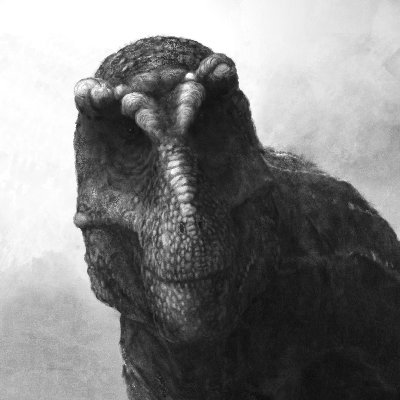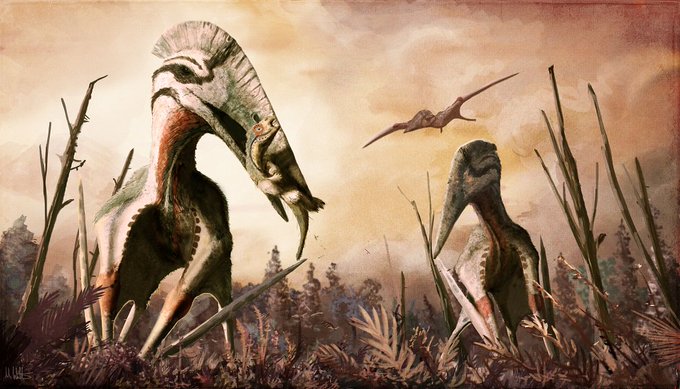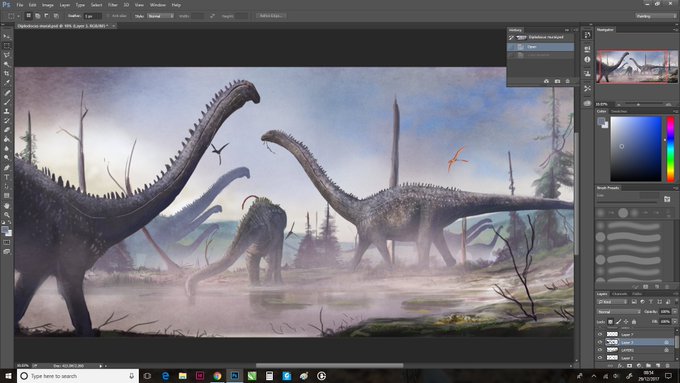For #FossilFriday, here's my take on the mid-sized azhdarchoid #pterosaur Thalassodromeus. There's some neat features on the skull of this animal which probably relate to facial tissues - I wrote about them at my blog not so long ago: https://t.co/IxWpLHJ1FL #paleoart
For #FossilFriday, a quick poll: which of these pterosaur images would you rather see in Life through the Ages II: Nyctosaurus or Hatzegopteryx? Both are awesome species, and I only have one pterosaur slot.
For #FossilFriday: a rarely seen comparison between giant azhdarchid pterosaurs and a large male giraffe (yes, they can get this big!). Pterosaurs are Arambourgiania (left) and Hatzegopteryx - slender and robust takes on the giant azhdarchid bauplan. @Gizz47 is the scale bar.
One of my new year jobs is transforming some old Diplodocus PR #paleoart (for @MikeTaylor, @TetZoo and Matt Wedel) into a giant mural. It'll be displayed alongside a very famous dinosaur skeleton in not too long. This image has quite a few iterations now.
It's been pointed out that this animal is sitting a little too high in the water - silly mistake on my part. Here's a version that doesn't defy physics.
I need ichthyosaur #paleoart for a book, so I've revisited an Ophthalmosaurus image not touched since 2015. Apparently it's now on holiday somewhere warm, scenic and probably expensive. Note the terrific animal/scenery ratio, which is just what you want in a crowded book.
A series of plesiosaur #paleoart for #FossilFriday: Jurassic marine species Attenborosaurus and Plesiosaurus, and the coastal/freshwater adapted Leptocleidus. It's very cool to think some plesiosaurs would be visible in rivers, lakes and estuaries.
Cold on the way to work this morning? Consider yourself lucky that you didn't live during the most extreme ice age of the last 550 My, at the end of the Ordovician Period. About 50% of marine genera went extinct, and stocks in the refrigeration industry plummeted. #paleoart
I've noticed that we often restore the babies of extinct animals with proportions much like our own tubby, dumpy offspring. This doesn't always fit fossil data, as evidenced by surprisingly leggy Protoceratops hatchlings (snout-vent c. 10 cm). #paleoart #dinosaurs
New blog post for #FossilFriday: Can we predict the horn shapes of fossil animals? Perhaps, with enough data, we have more insight on horn sheath shape than we realised. Stars Triceratops, because it's a post about horns. Also features new #paleoart!
https://t.co/vHbiHaP0jF


















